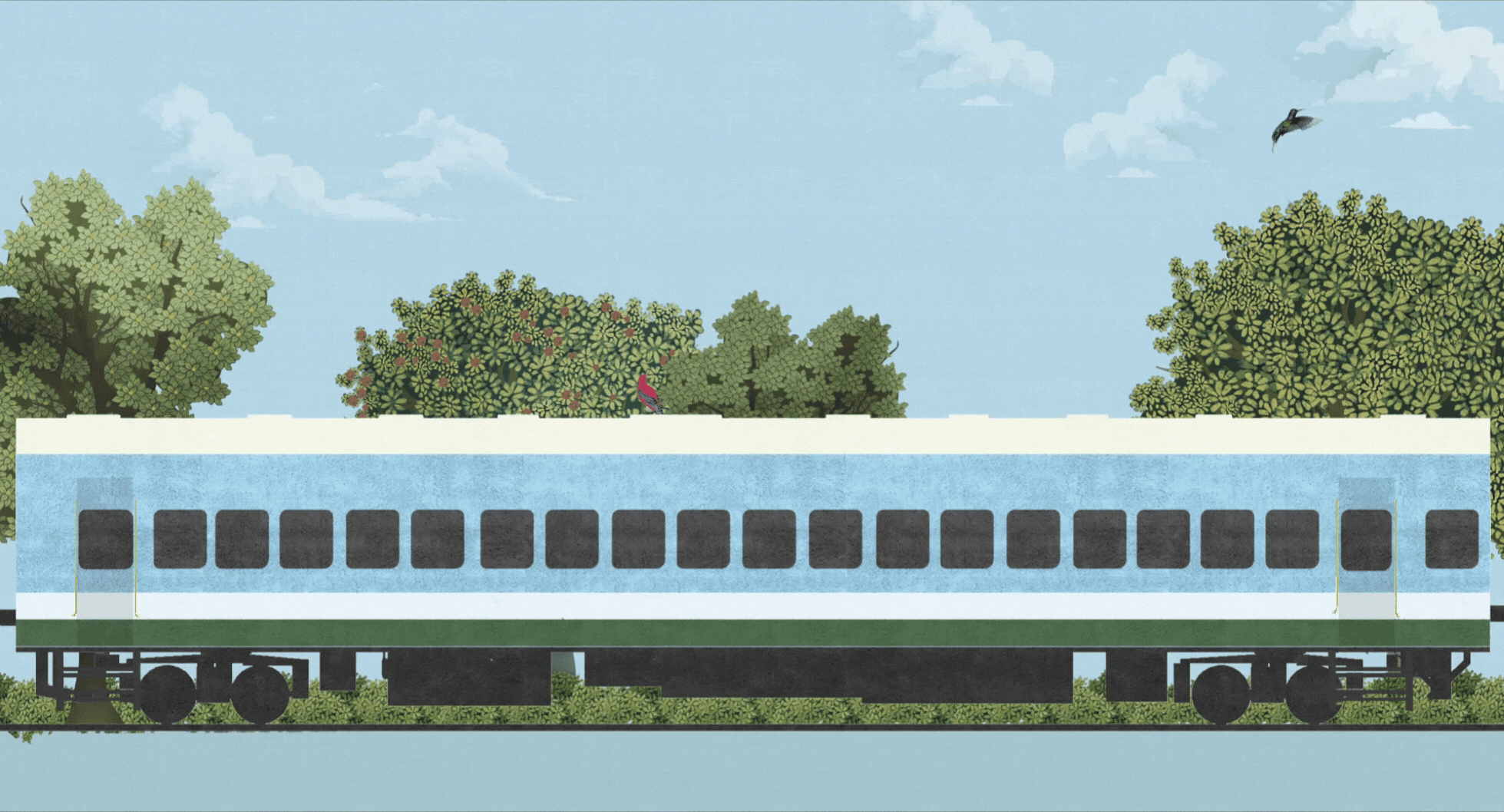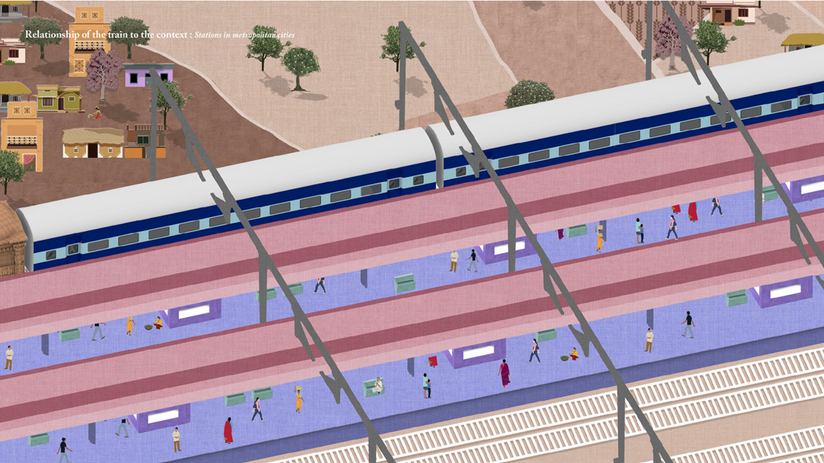JOURNEY OF CARE
The project is called Journey of care and is situated in India. The aim of the project is to re-imagine the existing public transport infrastructure of the railways and repurpose it to provide access to care. Trains are a local means of transportation and already have an existing identity in the country. In order to play around this identity and challenge the norms of openness around reproductive health, the train has been designed in a way that is performative with its facade, interactive with its audience, and modular in its responses to climate, and program across geographies.
Key Roles in the project:
- Part of Fall semester in GSAPP, Columbia University
- Project a part of the William Kinne Fellowship and is currently being researched on

railway system in india
As per the Global Gender Gap Report of 2021, China and India together account for about 1.5 million missing female births annually worldwide, which was one of the motivations to take the site as a case study, besides my own background.
lifeline express
In terms of repurposing, I looked at the Hospital train in India called the LIFELINE EXPRESS. This hospital train was started in 1991 in collaboration with an NGO and has ran around 200 projects since then to 2019. However even with the extensive railway network, the the train has not managed to reach every part of the country even till today. The train has an office space, conference car, staff car, 2 Operation theater cars and in recent years, a mammography machine and cancer awareness coach with 7 coaches in total. Which was added to by my program making it 12 coaches in total with one first service car included.

The design and massing of the train was looked at in terms of breaking the monotony. Since trains are linear, it was important to find ways in which design could make the space feel alot more spacious.

programs
Some of the programs added besides the one already in the train, include two clinics, an OB-GYN and a pediatric care, mental health coach and educational coaches for workshops and awareness.

network of care
The lifeline express works on a project base model where it stations itself in a rural or urban setting based on the need of the project and surrounding. It also thrives on the idea of a network of care where local schools and Empty marriage halls can be used as makeshift spaces for waiting for patients and even extend the care facility. It collaborates with NGOs and hospitals to come and service the train as their space for practice to be a part of the process. Since the train services the urban and rural poor, it is met with multiple situations of context. In some cases it meets the platforms of metropolitan cities where the infrastructure of the station extends to make it into a smaller village type clusters to form spaces of interaction, On the other extreme a lot of stations do not have updated infrastructure and in that case the train itself can turn into an extension of its model to provid shade, waiting and spaces to convene.
facade
Providing the opportunity to make this travelling system a performative one as well, the facade was used to address this. The various iterations include folding of the facade panels, tilting, opening them to use them as ramps or shading elements as well as making part of them openable to provide areas to sit





























